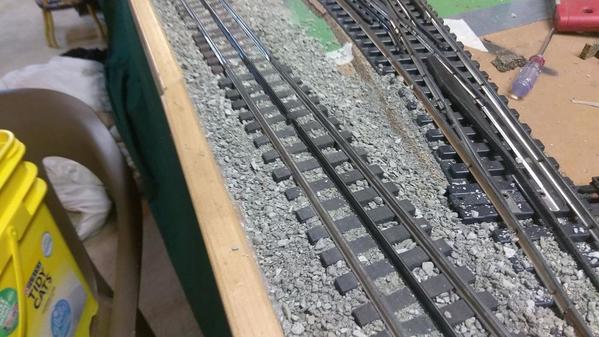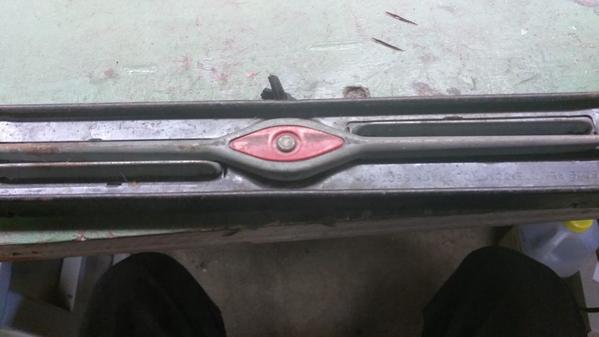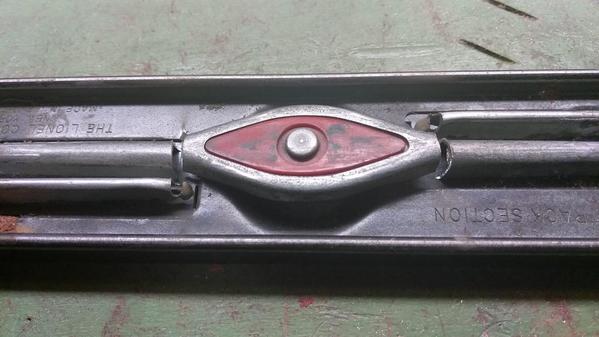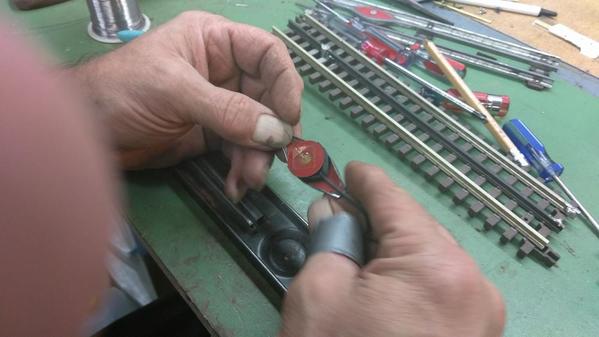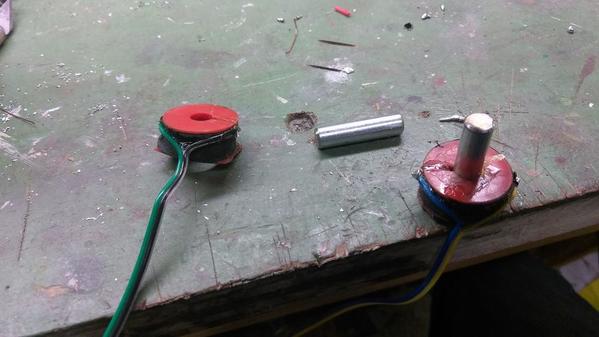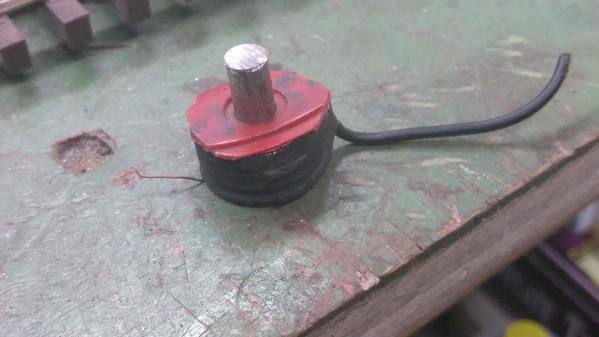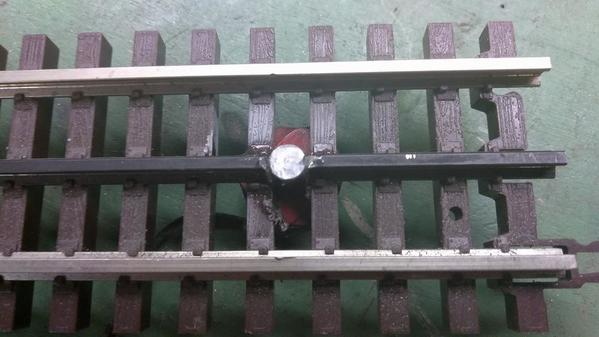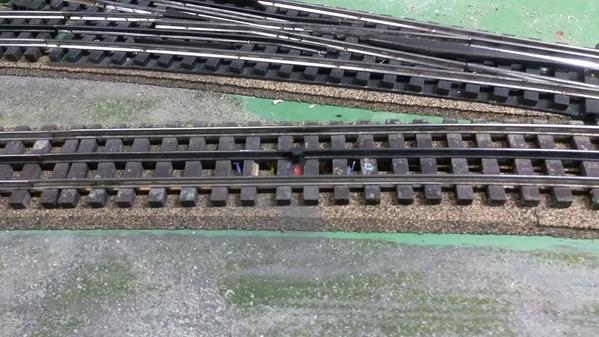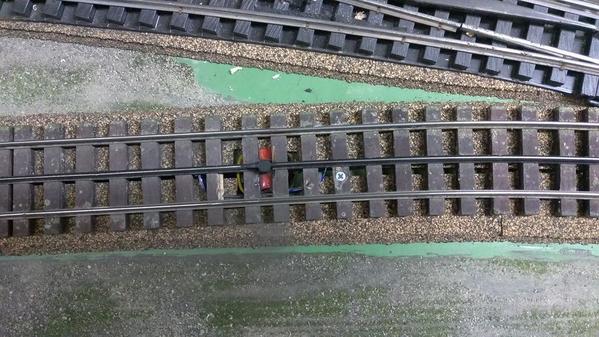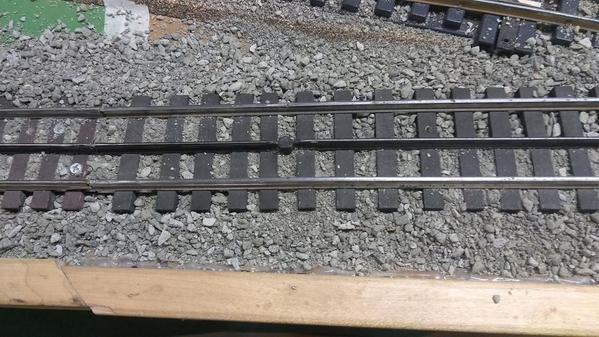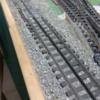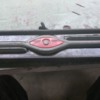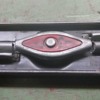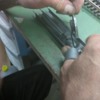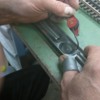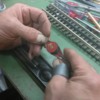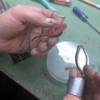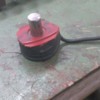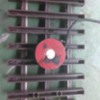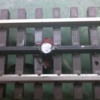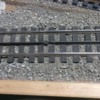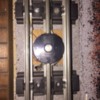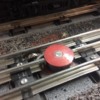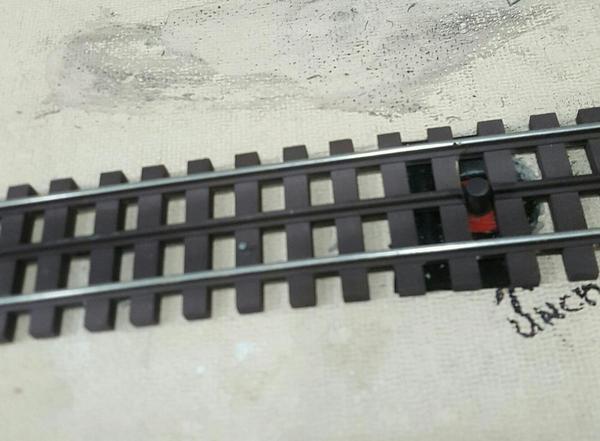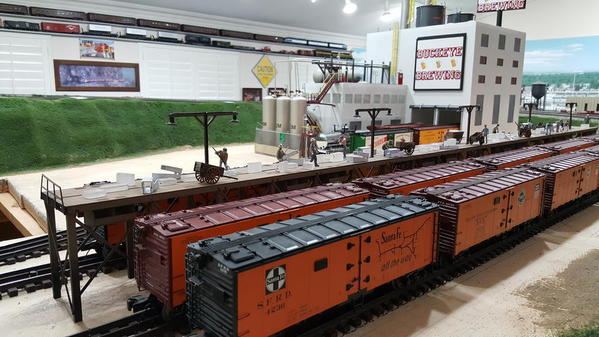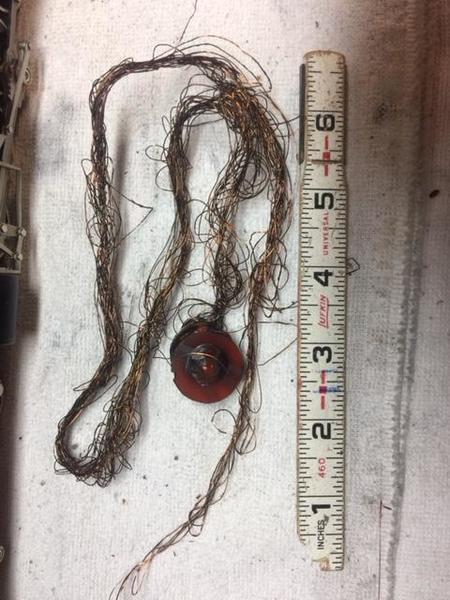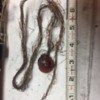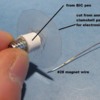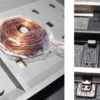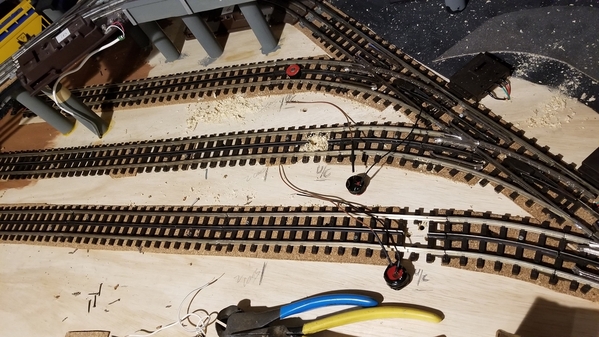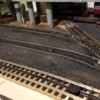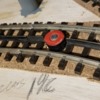Many folks struggle with hiding the uncoupling magnet in their yards, usually the uncoupling tracks are fairly ugly and really stand out. Wouldn't it be nice if you could make all your uncoupling tracks look like this. ![]()
This is how the uncoupling tracks were done on the NPOG layout. Credit Harry Henning for coming up with this nifty idea.
The obvious question comes up, where is it? You may need a signal post to indicate where to uncouple cars! Let's examine how this was done. You start with all those ugly 027 uncoupling tracks you were about to throw out...
Cut the magnet free on each side.
Remove it from the track, being careful not to break the wires.
Cut the wire fee, you can discard that old track you were about to throw out anyway.
Here's the magnet coil with the core removed.
Separate the coil from the rest of the metal from the track.
Cut a proper diameter bolt shank to length to extend the magnetic core.
Insert your core into the coil and glue it.
Glue the assembly to the bottom of the track after cutting a slot in the track, see following shot. Jumper around the cut track to maintain conductivity. You will need a hole to insert the magnet into in the benchwork, conveniently, that's where you'll run the wires from the magnet.
Install the track with the magnet.
Apply some ballast and it's hidden. Wire up the decoupling magnet circuit and you have a hidden decoupler.
I hope this is useful to someone out there. ![]()




